African collective exhibitions are not only enriching the art scene but also fostering connections between artists, communities, and the global stage.
In the contemporary African art world, collaboration has become a powerful force driving creativity, dialogue, and social impact. Across the continent, artists are joining forces, combining their unique visions, and breaking traditional boundaries to create impactful art pieces.
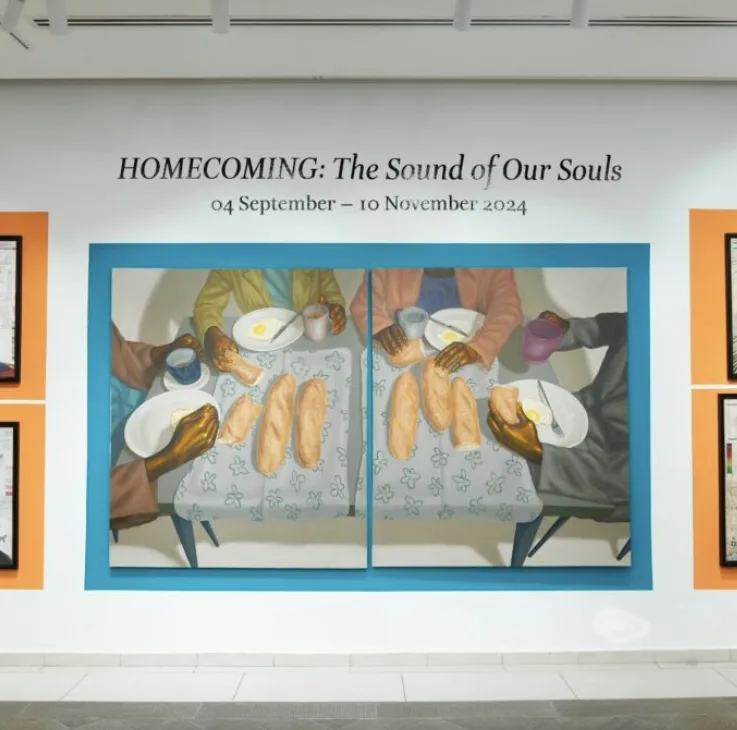
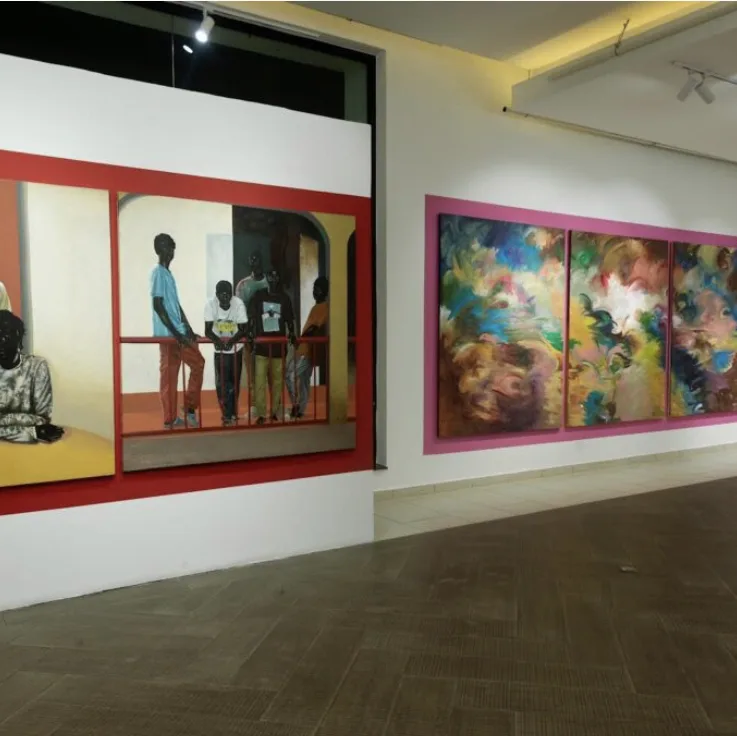
Homecoming: The Sound of Our Souls, an Exhibition in ADA Gallery, Ghana
This exhibition is a follow-up to the initial show held at the UTA Artist Space in Los Angeles, which brought 15 African artists together to create pieces that invites viewers to look indepthly to explore the artist’s story, identity, and message.
These artists include Barry Yusuf, the Nigerian rising star known for his bold and vibrant works showcased at premier international art fairs like 1-54, and Zandile Tshabalala, the South African visionary challenging historical representations of Black women through her powerful explorations of beauty, sensuality, and the female form.
Homecoming showcases 7 African artists who embody the continent’s vibrant creative spirit. As international attention turns to Africa, this exhibition invites audiences to engage with the artists’ stories, perspectives, and experiences. It’s a powerful celebration of African identity, heritage, and modernity. The featured artists include Ekene Emeka Maduka, Barry Yusuf, Nana Isaac Akwasi Opoku, and others.
The More Human than Human Exhibition at the ESCAP3 Gallery, South Africa

Curated by Dr Moshumee Dewoo, this exhibition is a compelling example of the impact of collective exhibitions. By bringing together a diverse range of artists and artworks, this exhibition challenges our obsession with idealized human forms and invites us to reconsider what it means to be human.
Through a spectrum of artistic expressions, the exhibition deconstructs the societal norms and expectations that have been perpetuated by these idealized forms, revealing the harmful impact they have on our self-perception and mental health.
Joining forces, these artists create a nuanced and multifaceted narrative that celebrates the richness and diversity of the human experience, promoting a more inclusive and empathetic understanding of beauty, worth, and identity.
Some of the participating artists include Goldendean AKA Dean Hutton, Daniël Hugo, and Emma Kielczynska.
The Woven Sanctuaries Exhibition at the Rele Gallery, Los Angeles

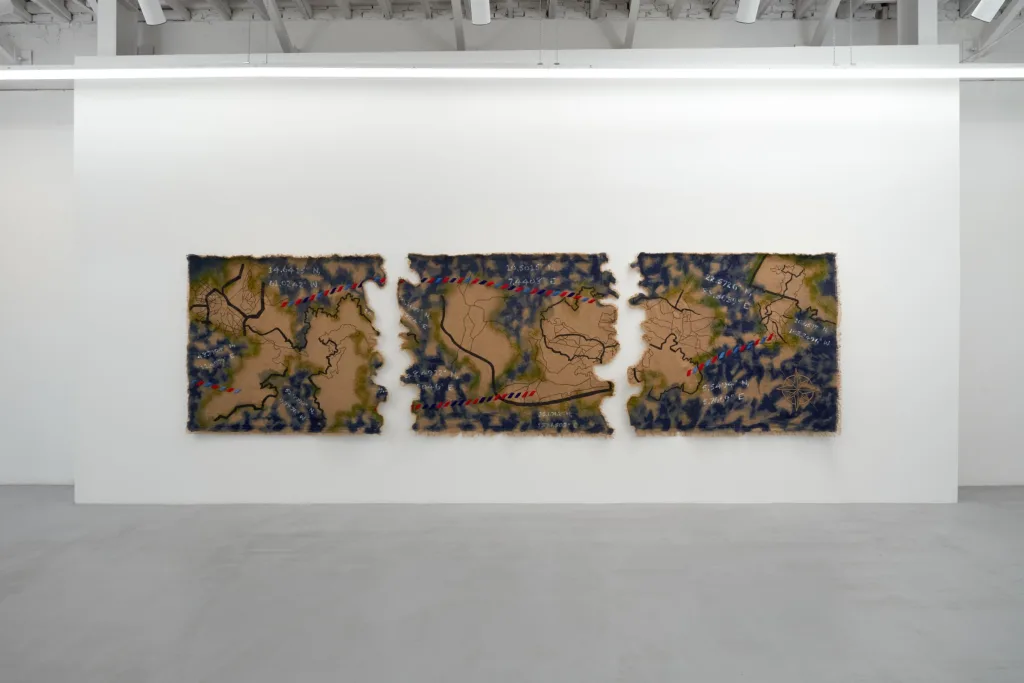
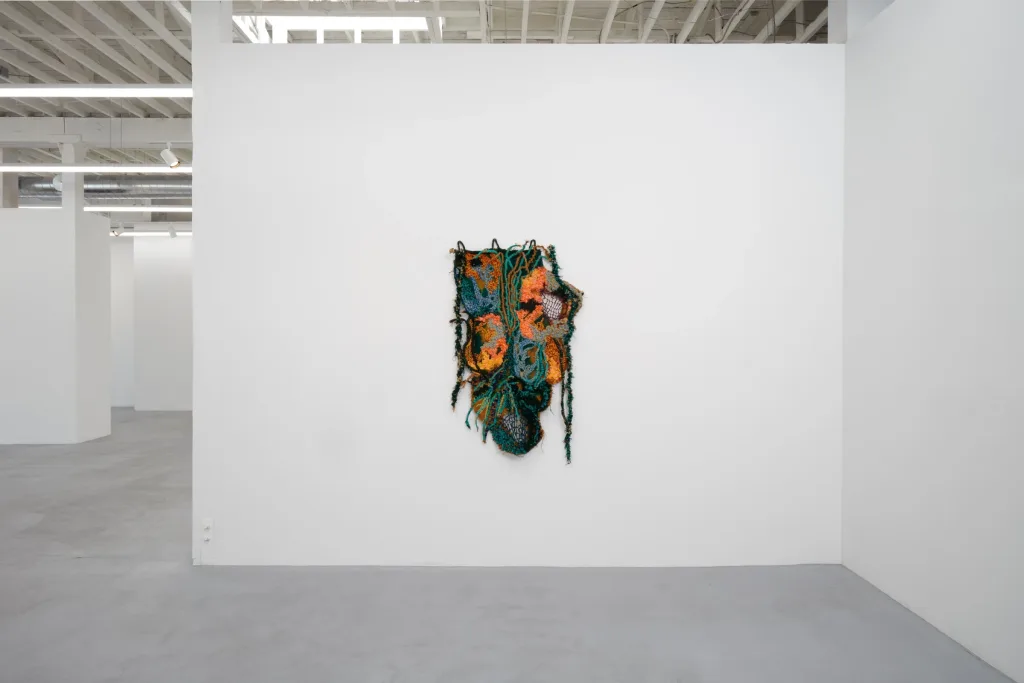
In this exhibition, seven African female artists (from Botswana, Egypt, Ethiopia, Kenya, Nigeria, and Zambia) band together, weaving textiles into powerful narratives to explore identity, individuality and cultural heritage.
Agnes Waruguru’s Memoryscapes series, which maps personal experiences onto natural landscapes using acrylic paint and natural pigment on cotton, is a testament to the emotional depth of textile art. Similarly, Fiker Solomon’s intricate weavings, using biodegradable materials like jute, highlight the interdependence between nature and society. Meanwhile, Yoma Emore’s Traveler’s Map series, which combines jute with painted text to recreate new geographies, speaks to the complexities of diasporic identity.
Likewise, through her thought-provoking installation, I Cut It So It Doesn’t Break My Neck, Rawan Abbas challenges the oppressive beauty standards and complex politics of sexual decorum in Egyptian society, specifically highlighting the societal pressures surrounding body hair removal.
By bringing together these diverse artists and their practices, the exhibition creates a rich tapestry of stories that not only celebrate the versatility of textiles but also shed light on the complex politics of cultural identity, globalization, and personal empowerment. This exhibition showcases the profound impact that African collective exhibitions can have when artists unite to share their distinct perspectives and practices, resulting in a display that transcends the sum of its parts.
In the Absence Exhibition by the Wajukuu Art Project
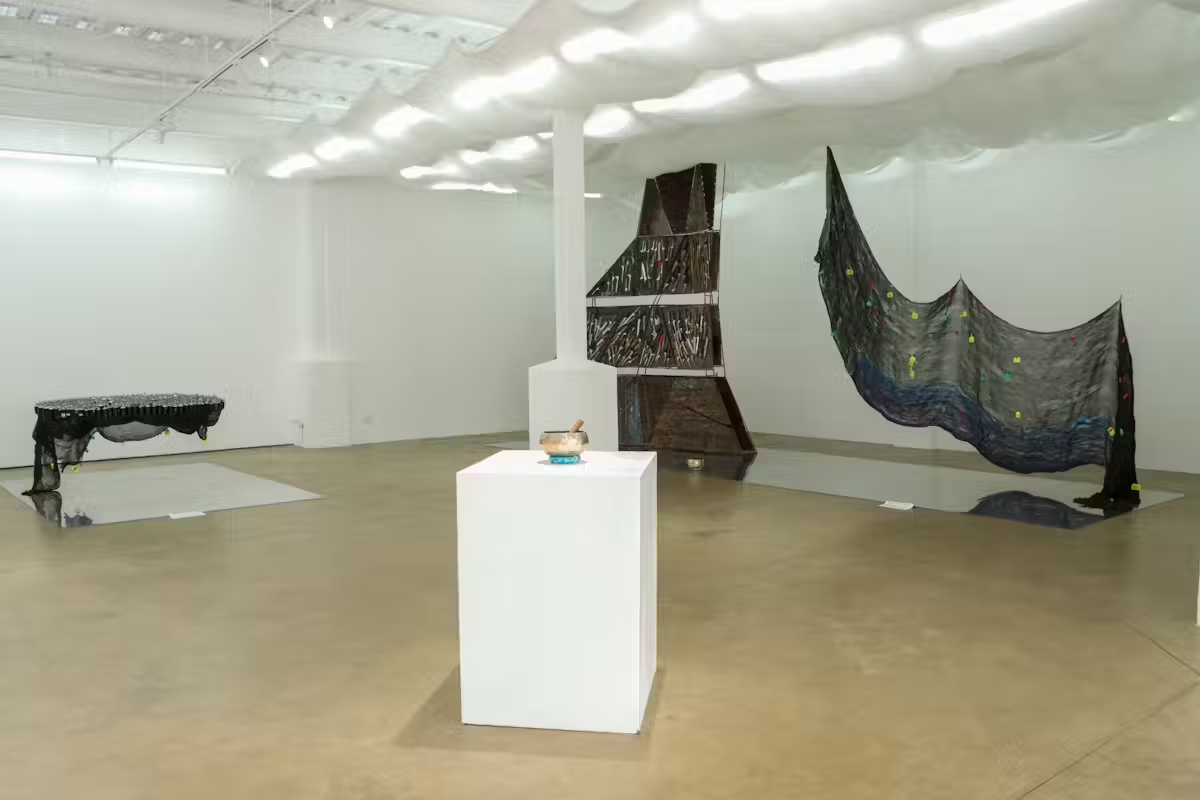
In the wake of the protests in Kenya, the In the Absence exhibition by the Wajukuu Art Project, a community-based organization for artists and art education, was displayed at the African Arts Trust Gallery.
This exhibition reflects Kenya’s post-colonial identity, touches on themes of self-awareness, capitalism and climate change. It features large installations by art collective Wajukuu, led by Shabu Mwangi, who encourages viewers to be more self-aware and present.
The exhibition is anchored by a striking installation of unlit koroboi lanterns, which symbolize the light of individualism in a capitalist world. However, their unlit state also critiques the reliance on fossil fuels and the lack of access to electricity for many Kenyans.
Through a range of media, including sound, mirrors, rusty knives, woven threads and others, the exhibition poses important questions about freedom, identity, and collective responsibility.
Ultimately, In the Absence is a call to action, urging viewers to be present and engaged in shaping a more introspective and equitable future for Kenya.
The Freestyle Cairo Exhibition at the Mashrabia Gallery of Contemporary Art
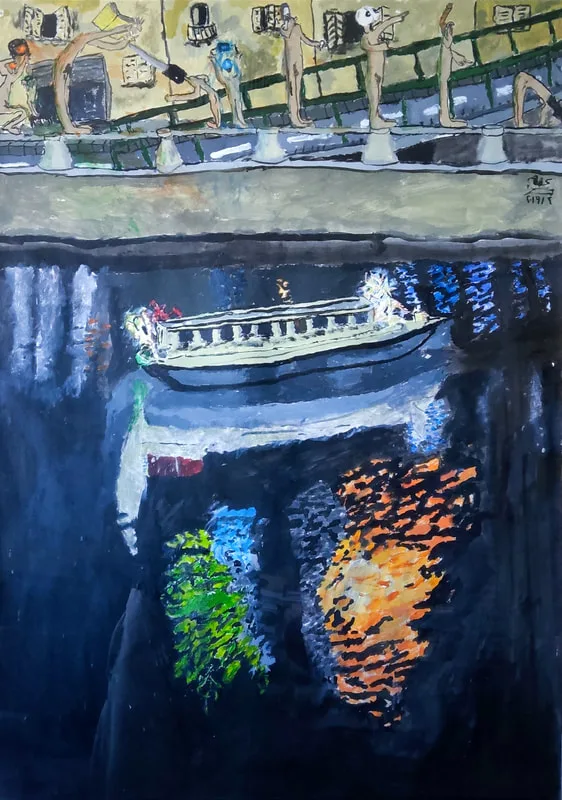
Through the combined perspectives of Luigerman, a Colombian photographer, and Essam Alaa, an Egyptian painter, this show offers a nuanced and multifaceted portrait of Cairo. Using their respective mediums, the artists capture the city’s vibrant energy, exploring the intersections of tradition and modernity, and revealing the emotional depth of its inhabitants.
By juxtaposing their outsider and insider perspectives, the exhibition creates a rich tapestry of stories, inviting viewers to reflect on the complexities of cultural identity, community, and the human experience.
This collective exhibition demonstrates the power of collaboration in creating meaningful art that resonates with audiences and challenges our understanding of the world around us.


